Reflections from the Alpine: Allie Howell
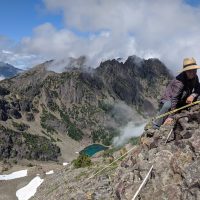
This summer as Rare Care Interns we worked on an alpine plant monitoring project for the National Park Service. On the surface, our job was simple: go to a site in Olympic, North Cascades, or Mt. Rainier National Parks, find the plant, map the edges of the population in the area, and usually set up a permanent plot to be monitored by the National Park Service in the future.
Read moreRare Plants and a Changing Climate
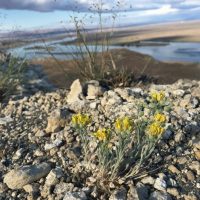
By Maya Kahn-Abrams
Over the past five months I have been immensely privileged to work on several of Rare Care’s projects restoring our beloved native rare plants all over Washington state. From hot July afternoons helping map shimmering meadows of pink Wenatchee Mountains checkermallow (Sidalcea oregana var calva) and purple Wenatchee larkspur (Delphinium viridenscens), to epic early mornings counting baby seedlings of White Bluffs bladderpod (Physaria douglasii ssp.
How alpine views helped me feel renewed
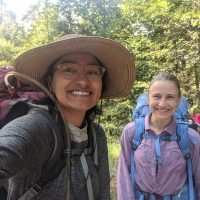
By Jaileen Merced
It is hard to believe that summer is over, and Allie and I have gone on 7 backpacking trips and 2 camping trips. Each of them very unique and special. From beautiful forest walks to steep crumbling slopes. We have covered so much ground and been to places I never thought I could reach. Working for Rare Care this year has been a privilege and a challenge.
Rare Care: Notes from the Field
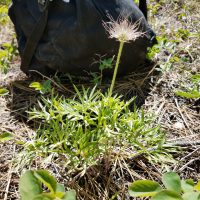
2021 was a jam-packed and prolific year of rare plant conservation for both Rare Care volunteers and staff. Safety remained a top concern, with care given to evolving COVID-19 protocols, and the wildfire season affecting access to many east side locations. Despite the extra challenges, we successfully completed research fieldwork and rare plant monitoring assignments, and added new collections to the seed vault.
Read moreHabitat Scouting from the Sky
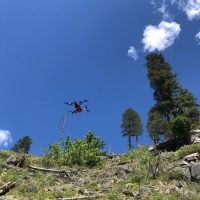
By Drew Foster
It’s late in the hotel room and every outlet is precious- lamps and clocks are abandoned for a plethora of plugs and cords. Everything is plugged in and charging: smartphone, tablet, laptop, power station, and batteries for the drone and sensor, check! Memory cards have plenty of space, data are backed up, and extra batteries and cables are in the bag, check!
Cusick’s Camas
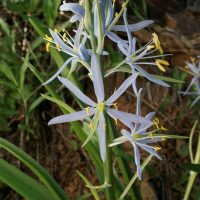
By Paul Slichter
Local botanists have long recognized several patches of an odd camas growing above the Klickitat River. They didn’t quite match the Suksdorf’s camas (Camassia leichtlinii ssp. suksdorfii) or common camas (both C. quamash ssp. breviflora and ssp. quamash) which are the local camas in the area.
Fortunately, Susan Kephart, a specialist in camas taxonomy, was invited to look at the unusual camas by local plant enthusiast, Barbara Robinson.
Counting the Endangered Wenatchee Mountains Checkermallow

We can now answer the question, with a high degree of confidence, of just how many Wenatchee Mountains checkermallow (Sidalcea oregana var. calva) plants there are. That’s due to a 9-year effort to count and map its largest known population at Camas Lands near Peshastin, WA. This population holds nearly 90% of all known individuals of this species; therefore, it is important to know how large this population is and how it is changing over time.
Read moreWelcome to Anna Carragee, New Rare Care Program Staff Member

“I love getting the reports back from rare plant monitoring volunteers–hearing how their searches went and seeing photos from successful hunts.”
Read morePrime Prairie Time
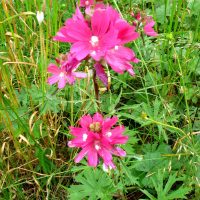
Only 90 minutes south of Seattle is an exquisite but threatened habitat: the South Sound Prairies. Prior to the arrival of Euro-American settlers, the Northwest prairie ecosystem west of the Cascades thrived under management by Native Americans, from Oregon’s Willamette Valley north to the San Juan Islands and into southwestern British Columbia. Today, less than 3% of that original habitat survives, and plants dependent on the prairies’ unique soil and topography require vigorous protection.
Read moreUnraveling the Mysteries of Seeds

Sometimes it takes a while to unravel the mystery of seeds; other times they present no mystery at all. Take showy stickseed (Hackelia venusta) seeds as an example of the former. The germination ecology of showy stickseed was for years a mystery. Traditional propagation techniques using cold stratification yielded poor germination rates. Researchers experimented with various scarification techniques (altering the seed coat by weakening or creating an opening) and gibberellic acid, a plant growth hormone, to stimulate germination.
Read more